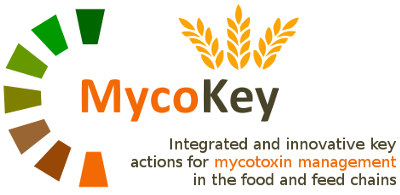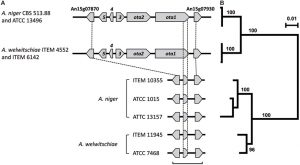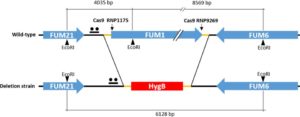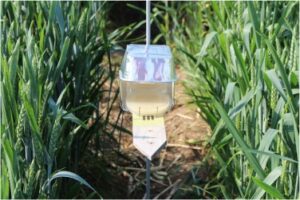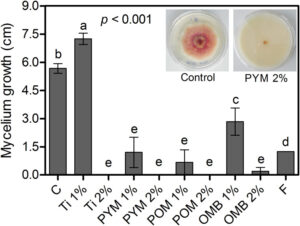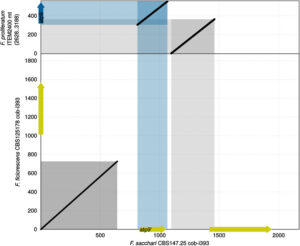Scientific Papers
MycoKey aims to unlock new knowledge and to valorize existing knowledge and data by rapid dissemination to research partners and stakeholders in the chain.
In the MycoKey programme all scientific peer reviewed publications are available through open access. Research data will be deposited in public data repositories for (re)-analysis exploitation and dissemination free of charge.
In this page you can find publications describing the scientific results arising from project’s activities.
Use of Botanicals to Suppress Different Stages of the Life Cycle of Fusarium graminearum
- google+
Fusarium head blight (FHB) is one of the most important cereal diseases worldwide, causing yield losses and contamination of harvested products with mycotoxins. Fusarium graminearum is one of the most common FHB-causing species in wheat and barley cropping systems. We assessed the ability of different botanical extracts to suppress essential stages of the fungal life cycle using three strains of F. graminearum (FG0410, FG2113, and FG1145). The botanicals included aqueous extracts from white mustard (Sinapis alba) seed flour (Pure Yellow Mustard [PYM] and Tillecur [Ti]) as well as milled Chinese galls (CG). At 2% concentration (wt/vol), PYM and Ti completely inhibited growth of mycelium of all F. graminearum strains whereas, at 1%, CG reduced the growth by 65 to 83%, depending on the strain. While PYM and Ti reduced the germination of both conidia and ascospores at 2% (wt/vol), CG was only effective in reducing conidia germination. Perithecia formation of FG0410 but not FG2113 was suppressed by all botanicals. Moreover, application of botanicals on mature perithecia led to a two- to fourfold reduction in discharge of ascospores. Using liquid chromatography (LC) with diode array detection, we quantified the principal glucosinolate component sinalbin of PYM and Ti. LC time-of-flight mass spectrometry was used to demonstrate that the bioactive matrix of CG contains different gallotannins as well as gallic and tannic acids. Possible antifungal mechanisms of the botanical matrices are discussed. The results of this study are promising and suggest that PYM, Ti, and CG should be explored further for efficacy at managing FHB
Authors: Dimitrios Drakopoulos , Carlos Luz , Raquel Torrijos , Giuseppe Meca , Pascal Weber , Irene Bänziger , Ralf T Voegele , Johan Six , Susanne Vogelgsang
Keywords: Fusarium graminearum; biological control; botanicals; disease control; mycology
Published: 10/10/2019
Repository: https://pubmed.ncbi.nlm.nih.gov/31600112/
CC-BY license http://creativecommons.org/



